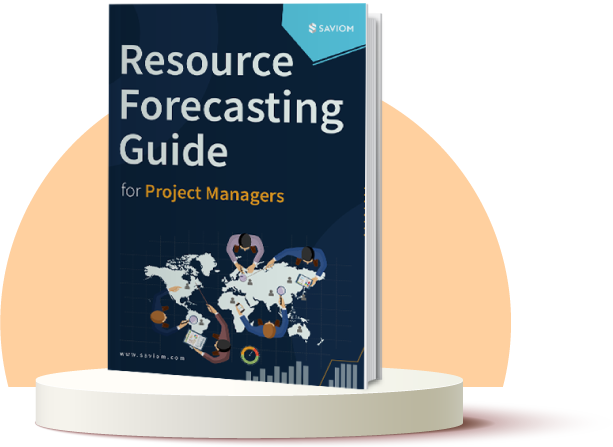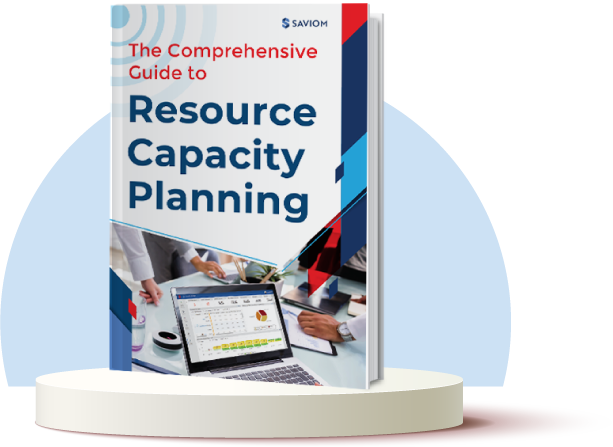Today’s hyper-competitive era is driven by knowledge-intensive enterprises. Thus, managing and leveraging the talent pool is the essence of your project-driven organization. These employees are not just a cost; they are human capital– an investment that should be managed and regulated with utmost diligence.
However, it’s not feasible to do so without a central governance structure. This is when a Project Management Office (PMO) comes into the picture.
A PMO is the nerve-center of an organization that propels the projects to the finish line within time and budget. With a solid framework in place, PMO takes care of all the nitty-gritty pertaining to the projects.
Naturally, this task presents umpteen challenges before the successful execution of the deliverables takes place. The challenges or roadblocks can be in the form of the inability to form an organized workflow, communication gaps between different managerial bodies, etc. One of the most prominent challenges that can surface and impact the project catastrophically is resource management.
In fact, according to the recent Center for Business Practices (CBP) research, “Resource management challenges are the top issues faced in project management today.”
This article emphasizes all the potential bottlenecks that come through a PMO’s way while managing resources.

But before we delve into the details, let’s have a glimpse of other challenges PMO encounters,
The challenges faced by PMO
Setting up a PMO demands significant investment, due to which many firms and decision-makers are skeptical. So the foremost challenge project managers face is getting the executive buy-in. Convincing the stakeholders to form a definitive body that can serve as a value center in the long haul is daunting.
The next hurdle in their way comes in the form of program and project prioritization. When you are just taking the initial steps, every project seems feasible to execute. Of course, that’s not the case. This only happens because of a missing project selection criterion in place.
For instance, you have two projects in the pipeline, one that offers significant ROI and another that is not high in revenue but adds value and other intangible benefits. Now, given a choice, every manager will have a different perspective and prioritize accordingly. This may, however, create chaos as the decision is based on intuition and personal experience rather than exact numbers.
A PMO can overcome this challenge by developing an organized framework to select the project. A classic example is integrating a cost-benefit analysis to make a decision based on facts and figures. Once this is tackled, the next stage is project planning and execution based on priority. This is when the managers face an ordeal in finding the right resource, forming realistic schedules, etc.
The question is, why is project resource management given so much weightage in deciding the PMO’s success?
The importance of resource management in PMO
A PMO is a focal point that is responsible for every project and its successful delivery. It handles the execution of multiple projects at once. Let’s take an example; three independent digital marketing projects are going on in your firm. All of these projects demand a senior data analyst.
However, you only have one data analyst whose schedule is thinly stretched and is unavailable to take up the job. What would you do? If you keep all the projects going in parallel, you end up burning out the employee, or if you prioritize only one project, the others will come to a halt. Only if you had taken a systematic approach and foreseen this could you take charge of the situation with diligent planning in advance.
This proactive planning ensures every project runs smoothly and has the right talent while keeping the resources’ health in check. That’s what makes resource management an incumbent process of a value-centric PMO. If not done efficiently, it can have severe repercussions on the project’s overall health.
Read More: The PMO Game Changer: A Value-Driven Project Resource Management
Here is the list of consequences you might encounter,
How does poor resource management impact the project’s progress?
What is poor resource management? The inability to meet the project resource demand before its onset, suboptimal utilization of the workforce, inadequacy in allocation, and scheduling are amongst many other practices that constitute poor resource management.
All this cumulatively influences the project’s course and strategic vision in the long run. For instance, assigning a less experienced resource to a critical task will delay the timeline. Similarly, if you allocate multiple projects to one highly specialized employee, he/she might juggle between the deadlines, which will eventually lower productivity. This scenario will also result in a declined project’s performance and quality.
Only if the project’s resource demand was taken care of during the planning stage and the workforce’s schedule and roles were analyzed meticulously could this be avoided. This is how inefficiency in managing resources can create havoc in project management.
It’s now time to take a deep dive into resource-centric challenges,
What are the resource management challenges PMO encounters?
Most of the resource management challenges stem from not having dedicated software in place. Organizations are expanding their horizons and dispersing across geographical boundaries, and employees from different locations cohesively work on one project.
Of course, it’s not feasible for a manager to keep a tab on every resource and their performance manually when separated by distance and time zones. A tool can solve these issues, but the firms who don’t implement the tool or sometimes don’t use it the right way face many hurdles.
Here is the list,
Lack of visibility into project resource demand
The PMO’s primary responsibility is to ascertain that every project is executed with due diligence and the quality is at par to meet the client’s expectations. To do that, one must know what skillset and how many resources are required in advance. Otherwise, last-minute firefighting can lead to wrongful hiring and affect the project’s quality and output.
However, PMOs often lack clarity on the project resource demand, leading to eleventh-hour hurdles and further delays. The previous example of digital marketing projects needing the same resource at the same time and managers were in the dark until the last hour is a prime example of this predicament.
Read More: How to Measure Resource Capacity and Demand
Sub-optimal resource allocation due to siloed data
The most crucial step in project planning is allocating the right resource to the right task.
But, as mentioned earlier, the PMOs that don’t invest in an intuitive solution rely on cumbersome spreadsheets to maintain the resource-data repository.
The drawback of these traditional tools is that they don’t update data in real-time. So managers won’t know who is available or who is booked on another task. In fact, this might even lead to double-bookings causing overallocation of work. Thus, sub-optimal allocation due to the absence of centralized data inventory is a real challenge for PMOs.
Inadequate resource utilization because of poor prioritization
Supposedly, you have four projects in the pipeline and have to fulfill the resource demand accordingly. One project aligns with your strategic goal and brings ROI, another does not offer tangible benefits but adds value, one does not add value, and one’s resource demand is not aligned with your talent pool’s expertise. Naturally, the priority should be the one that is strategically aligned and brings ROI.
But, due to a missing framework to select the projects, you prioritize the one you see first, i.e., the one which is not beneficial at all and end up scheduling the resources. In this case, neither the firm is benefitted from the project nor are the resource’s skills utilized in the right place. Thus, a substandard system to precede projects leads to inadequate resource utilization.
Read More: What is Resource Utilization? A Complete Guide to Improve Business Efficiency
Unorganized resource requisition workflow
A resource manager receives countless resource requests in a day from project managers. They often fulfill the request on a ‘first come, first serve basis’ instead of completing the demand for the high-priority projects. This happens when PMO does not follow an organized resource requisition workflow.
This can even lead to internal conflicts and ego clashes between two managers. Moreover, the projects that require immediate attention are sidetracked, and the ones that are not time-sensitive and could be prolonged are executed first. An absence of this workflow can impact the bottom line negatively.
Inability to future-proof the workforce against evolving demands
The current market is evolving as we breathe. The prominence of novel technology and business trends demands innovation and out-of-the-box expertise. The onus is on managers to stay ahead of the curve and stay abreast with the upcoming innovations and skillset. It will allow their existing workforce to be future-ready with technology trends.
For instance, you have hired two software engineers who master java-based coding. But the current market demands someone fluent in R and Python. Since you didn’t foresee this, your resources would become a liability, and eventually, you will have to get rid of them. If you had foresight into the future market opportunities and demands, you could train or upskill the same talent. This inability to future-proof the existing workforce can lead to unplanned attrition, increased overhead costs, benched resources, and so on.
Read More: What is Resource Capacity Planning? An Ultimate Guide for Every Project Manager
Lowered productivity due to lack of insight into various metrics
Imagine you are managing a project only to realize towards the end that the cost has exceeded the budget and the timeline is delayed. What would be your first thought? Naturally, if you had seen this coming, you would have taken the right action in time. The fact is managers can stay updated in real-time about any resource metric starting from availability to utilization using the tool to control the project lifecycle.
Those who do not invest in this solution fail to get these instant updates that compromise quality and cause delays. For example, you schedule a resource for a specific task. But, you are unaware that he/she is booked already, which implies you overallocated him/her. Since the resource’s schedule is stretched thinly, he/she will be unproductive and eventually burned out due to longer working hours and so on.
Ineffective bench management without accurate forecasting
An ideal PMO aims to significantly minimize the bench time to ensure their human capital generates enough revenue or adds value rather than idling. To achieve this, one must stay ahead of the schedules and know which resource is likely to end up on the bench.
However, many PMOs still struggle to get accurate predictions and rely on mere guesstimations. This is because they don’t have an advanced forecasting solution in place.
Due to inaccurate predictions or lack of foresight into bench reports, some employees end up spending more time than stipulated on the bench. It eats up from the firm’s revenue and wastes resources’ valuable skills and time.
These are some of the challenges a PMO faces, which can negatively impact the projects’ health and even defeat the purpose of a value-centric PMO.
To minimize this catastrophe, managers must implement the right resource management software and follow the best practices to achieve exceptional results.
Read More: Top Ten Business Benefits of Resource Management
In conclusion, here are some tips and tricks to overcome these hurdles,
Takeaway tips to combat these challenges
- Select the right resource management solution to suit your business needs and get accurate real-time reports of the necessary metrics.
- Optimize resource schedules using techniques like smoothing and leveling at the project planning stage. It will avoid future discrepancies, minimize risks of burnout, and escalate productivity.
- Foresee the project resource demand and promote proactive resource planning to bridge the capacity vs. demand gap in advance. This will minimize your hiring costs and help you get the best talent for the job.
- Stay ahead of the curve and conduct professional development programs to future-ready your workforce and stay relevant in the long haul. It also increases the sustainability of your firm and helps you maintain a competitive edge.
- In addition to these, state the roles and responsibilities of every employee with utmost transparency. This allows them to know what is expected of them and how they can add value to achieving the firm’s long-term objectives.
- Publish open positions to form an inclusive culture that gives employees a chance to work on their area of interest. This will enhance task ownership and productivity by multiple folds and organizational efficiency at the same time.
How has your PMO’s journey been so far?
The Glossary
Read More: Glossary of Resource Workforce Planning, Scheduling and Management
The SAVIOM Solution
SAVIOM is the market leader in providing an Enterprise Resource Capacity Planning solution. With over 20 years of experience leading the market, Saviom is actively used by over 15 highly-esteemed global companies worldwide. The tools within the suite include project portfolio management, professional service automation, and workforce planning software. It also entails supporting solutions to schedule equipment and assets seamlessly. Re-engineer operational efficiency with a system shaped around your business!









